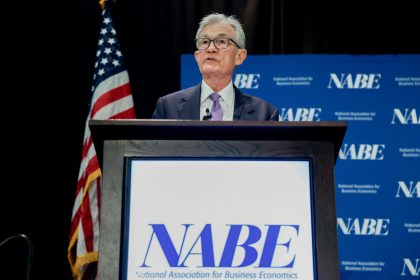In a quarter in which macroeconomic headwinds loomed and Wall Street kept its expectations cautious, Disney (DIS) delivered a performance that almost felt magical.
In the company’s second-quarter fiscal 2025 earnings report, released May 7, Disney posted revenue of $23.62 billion, up 7 percent from a year earlier and above analyst expectations. Streaming and domestic theme parks played a starring role in Disney’s outperformance.
For investors, Disney’s earnings report signals the company is no longer struggling to survive the post-pandemic media landscape. It’s performing, growing and proving that the streaming turnaround is real.
A quarter of strong results
For investors, there were plenty of positive numbers across the board.
Adjusted earnings per share (EPS) came in at $1.45 — 20 percent higher than the Wall Street consensus of $1.20. Meanwhile, net income soared to $3.28 billion, a night-and-day turnaround from the $20 million net loss posted in the same quarter last year.
Investors took note. Disney’s shares jumped 5.8 percent in pre-market trading.
The company also raised its full-year guidance, forecasting $5.75 in adjusted EPS for fiscal 2025 — a 16 percent year-over-year increase and a sign of confidence from leadership that the quarter wasn’t a fluke.
Need an advisor?
Need expert guidance when it comes to managing your investments or planning for retirement?
Bankrate’s AdvisorMatch can connect you to a CFP® professional to help you achieve your financial goals.
Streaming: From money pit to profit-generator
The most eye-catching turnaround was in Disney’s streaming division. After years of bleeding cash in pursuit of Netflix’s (NFLX) dominance, Disney’s direct-to-consumer streaming business is finally in the black, marking the fourth-straight profitable quarter for the segment.
Streaming operating income hit $336 million, up $289 million from a year ago. Revenue was also up, driven by subscriber growth and price hikes.
Disney+ added 1.4 million subscribers globally, bringing the total to 126 million. Combined with Hulu, Disney’s total subscriber base hit 180.7 million.
What makes this more than just a one-off win is the strategy shift behind it. CEO Bob Iger and his team are no longer playing the scale-at-all-costs game. They’re optimizing for profitability and growth.
“That eye toward the future and driving growth is central to the important work we’ve done,” Iger said during Wednesday’s earnings call. “And looking at our second quarter results, we’re making excellent progress.”
Parks and experiences are still Disney’s financial anchor
While streaming grabbed headlines, the core of Disney’s financial engine remains its experiences segment — its theme parks, resorts, cruise ships and consumer products. That division brought in $8.89 billion in revenue and $2.49 billion in operating income, up 6 percent and 9 percent, respectively, from last year.
The standout here was domestic theme parks and experiences, where operating income jumped 13 percent to $1.82 billion. That growth came from higher park attendance, increased guest spending and strong performance from the new Disney Treasure cruise ship. Disney’s domestic parks are proving to be incredibly resilient, even in the face of economic uncertainty.
The picture wasn’t as bright overseas, though. Operating income from international parks dropped 23 percent, dragged down by falling attendance in Shanghai and Hong Kong.
Analysts had warned that anti-American sentiment and rising travel costs might weigh on international demand. In that sense, the decline wasn’t surprising, though declines were offset by stronger-than-expected domestic demand.
Entertainment is back on its feet
Disney’s broader entertainment segment — which includes film, television and content licensing — also had a surprisingly strong showing. Operating income surged 61 percent year-over-year to $1.25 billion.
Even Disney’s lagging linear TV business turned in a mixed but manageable report: Domestic revenue was down 3 percent, but operating income grew 20 percent thanks to cost-cutting measures.
Still, some headwinds remain
However, it’s not all pixie dust and parades for Disney. The company faces real challenges, especially when it comes to economic conditions and political risk.
President Donald Trump’s tariffs proposal — which includes potentially slapping a 100 percent tax on foreign-made films — rattled investors earlier this week. If implemented, it could jack up production costs and reduce flexibility in where content is created.
It’s not clear how “foreign-produced” will even be defined, or whether it applies to streaming content.
Disney’s stock briefly dipped Monday after Trump’s announcement, though shares recovered most of those losses by close, ending down just 0.4 percent.
There’s also the ongoing risk of an economic slowdown. Analysts from Morningstar were skeptical just last month, citing the risk that theme parks might lose steam if consumers pull back on discretionary spending. The international drop-off in park attendance gives the concern some credence.
But Disney’s Q2 numbers suggest that, for now, the company is bypassing economic concerns — and even gaining ground.
Looking ahead
Disney management is betting big on expansion across the board. A $60 billion investment in theme parks is underway, with new lands themed around Disney Villains, Cars and Monsters Inc. planned to open by the end of the decade. On Wednesday, Iger announced plans for Disney’s seventh theme park in Abu Dhabi.
Meanwhile, cruise capacity is expected to double by 2026 with seven new ships on the way. And ESPN’s upcoming standalone streaming app — with features like betting and fantasy sports — is slated for launch this fall.
On the content side, Disney’s pipeline remains full, with upcoming theatrical releases from Marvel and Pixar. And with improved cash flow guidance — $17 billion for the fiscal year, up $2 billion from earlier estimates — Disney is projecting a happily ever after, too.
Bottom line
Disney’s second-quarter results weren’t just a beat — in many ways, they were a comeback.
After five years of lackluster performance on Wall Street, the company is reaffirming its status as a blue chip stock.
Streaming is no longer a financial sinkhole. Parks are profitable. And the broader entertainment business is regaining its footing. For investors, it shows Disney is no longer a turnaround story. It’s a growth story — again.
Editorial Disclaimer: All investors are advised to conduct their own independent research into investment strategies before making an investment decision. In addition, investors are advised that past investment product performance is no guarantee of future price appreciation.
Read the full article here
















